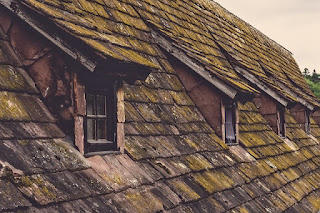1. Understanding the Lifespan of Different Roofing Materials
Before diving into the signs of a failing roof, it's essential to understand the expected lifespan of various roofing materials:
Asphalt Shingles: The most common roofing material, asphalt shingles typically last 15-30 years, depending on the quality of the shingles and installation.
Metal Roofing: Metal roofs are known for their longevity and can last 40-70 years or more.
Clay or Concrete Tiles: These materials have a long lifespan, often exceeding 50 years, with proper maintenance.
Wood Shingles or Shakes: Wood roofs can last 20-40 years, depending on the quality of the wood and maintenance.
Slate Roofing: Slate is one of the most durable roofing materials, lasting over 100 years in some cases.
Knowing the expected lifespan of your roofing material can help you gauge when your roof may be nearing the end of its life.
2. Signs Your Roof Needs to Be Replaced
2.1. Age of the Roof
The most obvious sign that your roof may need replacement is its age. If your roof is approaching or has exceeded its expected lifespan, it's time to consider a replacement, even if there are no visible signs of damage.
2.2. Missing or Damaged Shingles
Check your roof for missing or damaged shingles. Cracked, curled, or buckled shingles are a sign that your roof is deteriorating. Missing shingles can expose the underlayment, increasing the risk of leaks.
2.3. Granule Loss
Asphalt shingles lose granules over time, which can lead to bare spots on the shingles. Check your gutters and downspouts for excessive granule accumulation, as this is a sign that your shingles are deteriorating.
2.4. Leaks and Water Damage
Visible leaks in your attic or living spaces are a clear sign that your roof needs attention. Water stains on ceilings and walls can also indicate a problem with your roof.
2.5. Sagging Roof
A sagging roof is a serious issue that requires immediate attention. Sagging can be caused by structural problems, excess weight from snow or water, or damage to the roof deck.
2.6. Algae and Mold Growth
Algae and mold growth on your roof can lead to damage over time. These organisms thrive in moisture-rich environments, so their presence may indicate moisture issues with your roof.
2.7. Sunlight in the Attic
If you see sunlight shining through your attic, it means there are gaps or holes in your roof. These openings can allow water and other elements into your home.
2.8. Higher Energy Bills
An increase in your energy bills may be due to poor insulation or ventilation caused by a failing roof. This can lead to heat escaping in winter or entering in summer, making your HVAC system work harder.
2.9. Loose or Exposed Nails
Check for loose or exposed nails on your roof. These can allow moisture to seep in and cause damage over time.
3. The Importance of Regular Roof Inspections
Regular roof inspections are crucial for identifying potential problems early and preventing costly damage. You can perform visual inspections from the ground or hire a professional to conduct a thorough assessment.
Frequency: Inspect your roof at least twice a year—once in the spring and once in the fall. Additionally, inspect your roof after severe weather events such as storms, heavy winds, or hail.
What to Look For: During an inspection, look for the signs mentioned above, including missing or damaged shingles, granule loss, and water damage.
Professional Inspections: Consider hiring a professional roofing contractor to inspect your roof every few years. They have the experience and expertise to identify issues that may not be visible to an untrained eye.
4. Steps to Take When You Suspect Your Roof Needs Replacement
4.1. Confirm the Need for Replacement
If you suspect your roof needs to be replaced, confirm the need by inspecting it yourself or hiring a professional. Look for the signs mentioned in section 2.
4.2. Get Multiple Quotes
When you've determined your roof needs replacement, obtain quotes from several reputable roofing contractors. Compare their estimates, materials, and warranties to make an informed decision.
4.3. Choose the Right Roofing Material
Consider the climate and your budget when choosing a new roofing material. Consult with your contractor to determine the best option for your home.
4.4. Prepare Your Home for Replacement
Before the replacement begins, prepare your home by clearing your yard of any obstacles and covering items in your attic to protect them from dust and debris.
4.5. Monitor the Replacement Process
Stay informed throughout the replacement process and communicate with your contractor to address any concerns that may arise.
4.6. Inspect the New Roof
After the replacement is complete, inspect the new roof to ensure everything is installed correctly and up to your standards.
Conclusion
Knowing when your home roof needs to be replaced is essential for maintaining the safety and integrity of your home. By recognizing the signs of a failing roof and taking prompt action, you can prevent costly damage and ensure your home remains comfortable and protected for years to come. Regular inspections and maintenance are key to extending the life of your roof and ensuring it performs optimally. When the time comes for a replacement, work with a reputable roofing contractor to ensure a quality job and peace of mind.










